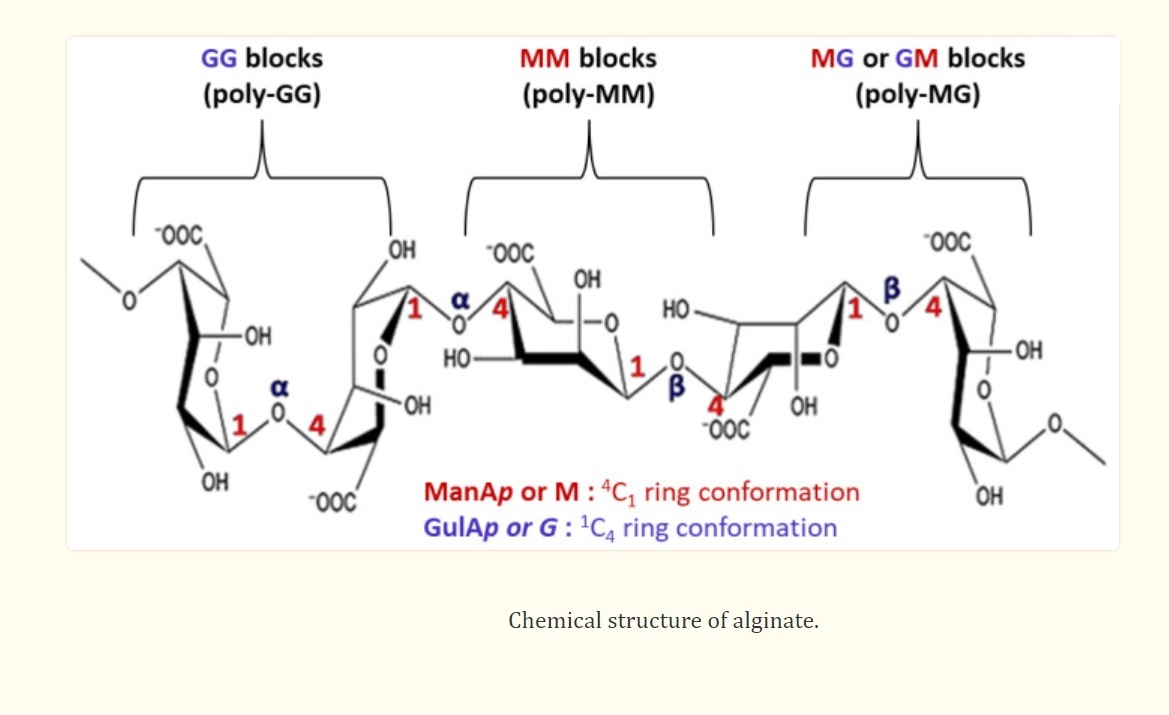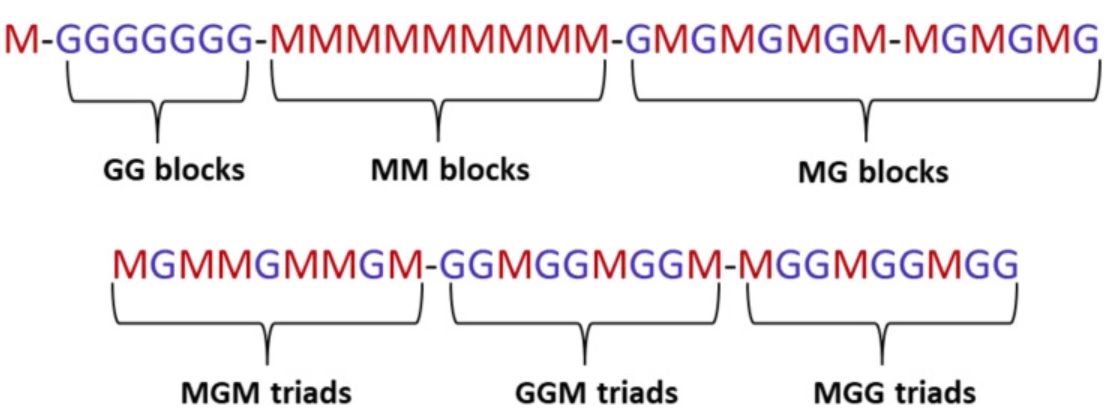Chemical structure of alginate

Alginate, also called alginic acid is a hydrocolloid from algae, specifically brown algae, which is a group that includes many of the seaweeds, like kelps and an extracellular polymer of some bacteria. Sodium alginate is one of the best-known members of the hydrogel group. The hydrogel is a water-swollen and cross-linked polymeric network produced by the simple reaction of one or more monomers. The main structure of alginates is composed of two monomeric units: β-(1,4) linked d-mannuronic acid (ManAp or M) with 4C1 ring conformation and α-(1,4)-linked l-guluronic acid (GulAp or G) with 1C4 ring conformation.

Differences in M/G ratio and block configuration account for the differences in alginate properties and functionality, especially in gelling capability and gel strength. The M/G ratio is dependent upon such factors as the species of seaweed, the part of the seaweed used, the harvest location, and the harvesting season.
The carboxyl groups within the M and G units are easily ion-exchanged, and can react with several kinds of cations. This results in changes in alginate properties and functionality. Utilizing these chemical reactions and the resultant changes in functionality, alginates have many commercial applications such as a thickening agent, a gelling agent, a dispersion stabilizer, and a texturizer.
The M/G ratio of alginate extracted from various seaweed species:
| Species | Manuronic Acid (M) % | Guluronic Acid (G) % | M/G ratio |
| Ascophyllum nodosum | 46.0 | 54.0 | 0.85 |
| Bifurcaria bifurcata | 65.0 | 35.0 | 1.88 |
| Fucus guiryi | 82.0 | 18.0 | 4.41 |
| Fucus vesiculosus | 59.0 | 41.0 | 1.44 |
| Laminaria digitata | 59.0 | 41.0 | 1.44 |
| Laminaria hyperborea, fronds | 56.0 | 44.0 | 1.28 |
| Laminaria hyperborea, stems | 30.0 | 70.0 | 0.43 |
| Laminaria japonica | 65.0 | 35.0 | 1.86 |
| Laminaria ochroleuca | 72.0 | 28.0 | 2.52 |
| Macrocystis pyrifera | 61.0 | 39.0 | 0.69 |
| Saccharina longicruris | 41.0 | 59.0 | 0.69 |
| Saccorhiza polyschides | 63.0 | 37.0 | 1.73 |
| Sargassum vulgare | 56.0 | 44.0 | 1.27 |
As a natural polymer material, the relative molecular mass of alginic acid depends on many factors, such as seaweed species, extraction conditions, post-processing conditions, etc. In industry, alginic acid is usually divided into low viscosity, medium viscosity and high viscosity.
Relative molecular weight and degree of polymerization of commercial alginic acid are distributed as follows:
| Type | molecular weight | degree of polymerization |
| low viscosity | 12,000-80,000 | 60-400 |
| medium viscosity | 80,000-120,000 | 400-600 |
| high viscosity | 120,000-190,000 | 600-1000 |
Source: Kelco alginic acid introduction, Edition 4.
© Copyright - 2023 | Shandong Jiejing Group Corporation All Right Reserved.
